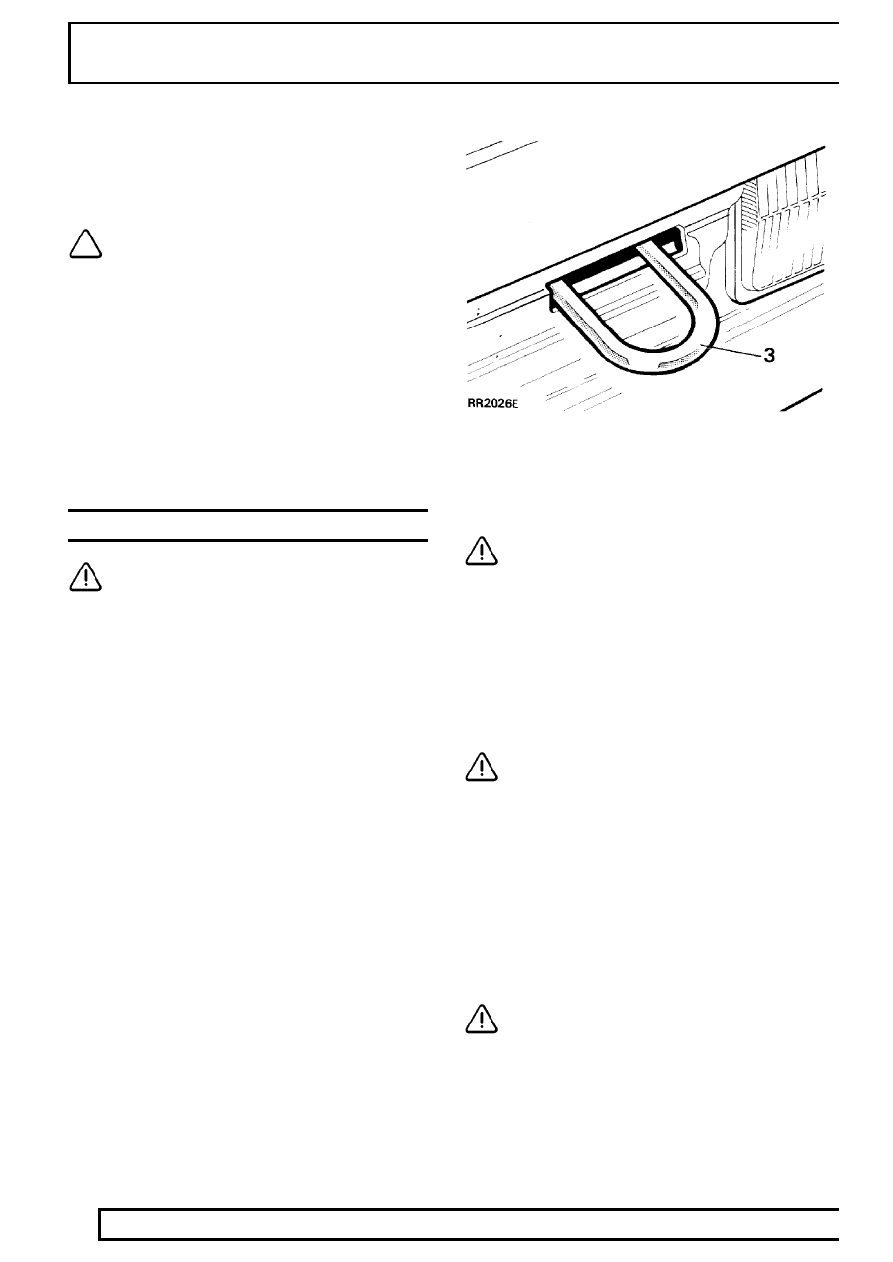Discovery (1995+): Body Repair Manual - part 2

01
INTRODUCTION
8
INFORMATION
Two wheel dynamometers
IMPORTANT: Use a four wheel dynamometer for
brake testing if possible.
NOTE: ABS will not function on a two
wheel dynamometer. The ABS light will
illuminate during testing. Normal braking
will be available.
If brake testing on a single rig is necessary it must be
carried out with propeller shaft to the rear axle
removed, AND neutral selected in BOTH main and
transfer boxes.
If checking engine performance, the transfer box must
be in high range and drive shaft to stationary axle
removed.
TOWING
CAUTION: The vehicle has permanent
four-wheel drive. The following towing
instructions must be adhered to:
Towing the vehicle on all four wheels with driver
operating steering and brakes.
1. Turn ignition key turn to position ’1’ to release
steering lock.
2. Select neutral in main gearbox and transfer
gearbox.
3. Secure tow rope, chain or cable to towing eye.
4. Release the parking brake.
CAUTION: The brake servo and power
assisted steering system will not be
functional without the engine running.
Greater pedal pressure will be required to apply
the brakes, the steering system will require
greater effort to turn the front road wheels.
The vehicle tow connection should be used only
in normal road conditions, ’snatch’ recovery
should be avoided.
Suspended tow by breakdown vehicle
CAUTION: To prevent vehicle damage,
front or rear propeller shaft MUST BE
removed, dependent upon which axle is
being trailed.
1. Mark propeller shaft drive flanges at transfer
gearbox and axles with identification lines to
enable the propeller shaft to be refitted in its
original position.
2. Remove the propeller shaft fixings, remove the
shaft from the vehicle.
3. If the front axle is to be trailed turn ignition key to
position ’1’ to release steering lock.
CAUTION: The steering wheel and/or
linkage must be secured in a straight
ahead position. DO NOT use the steering
lock mechanism for this purpose.